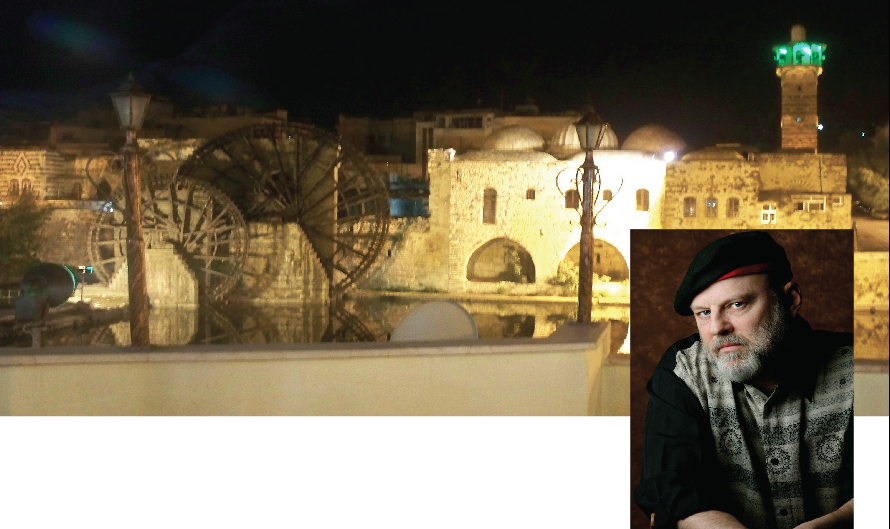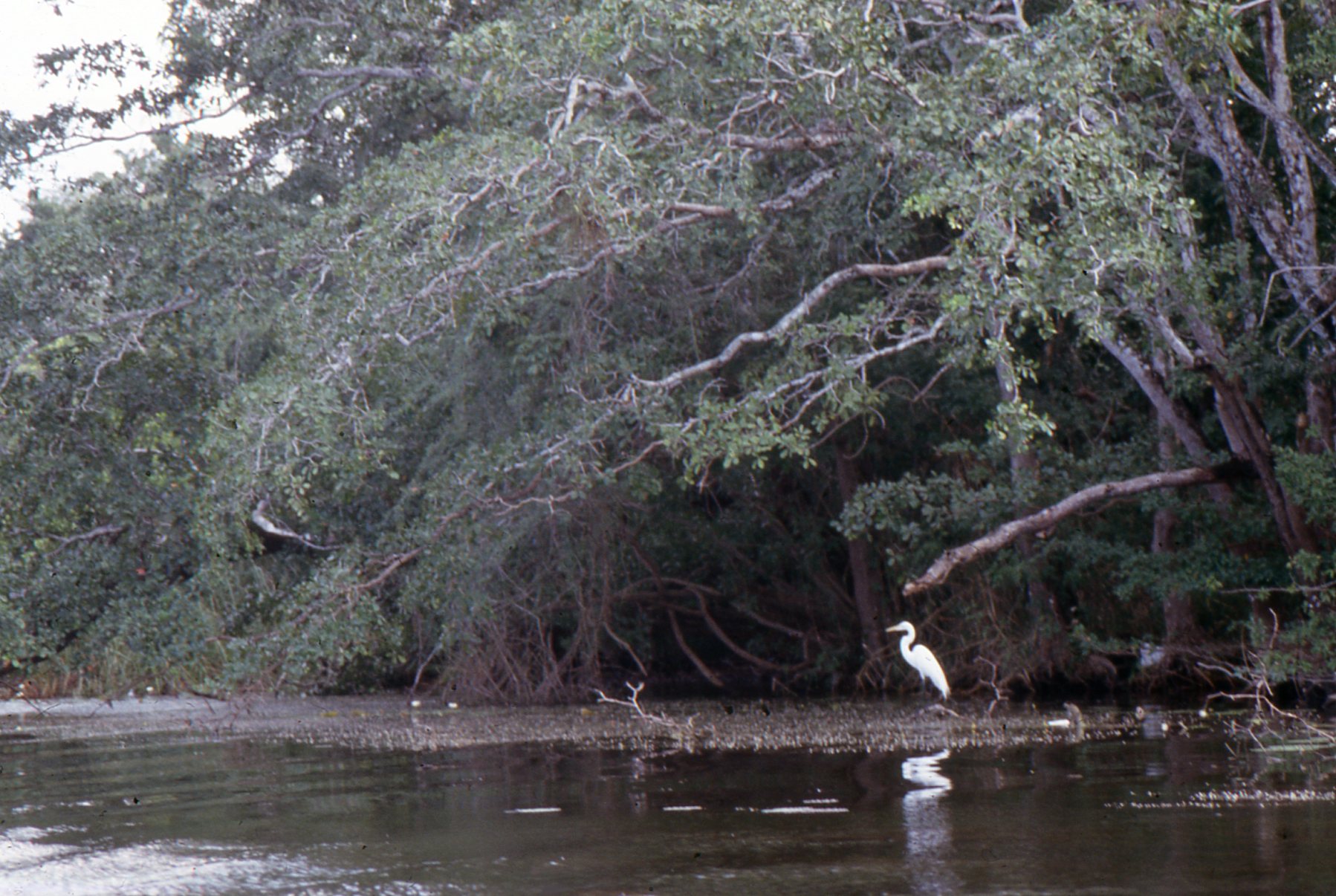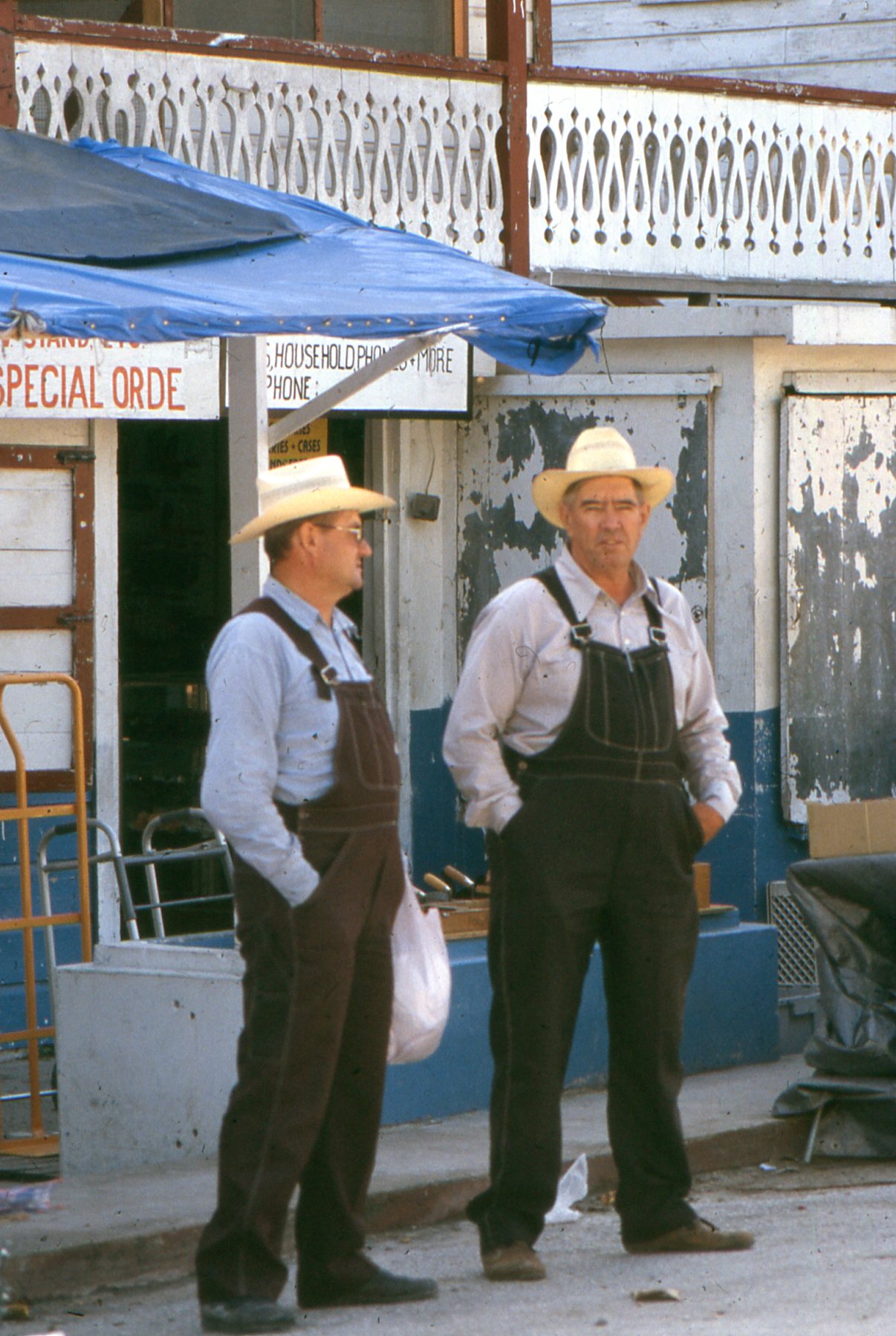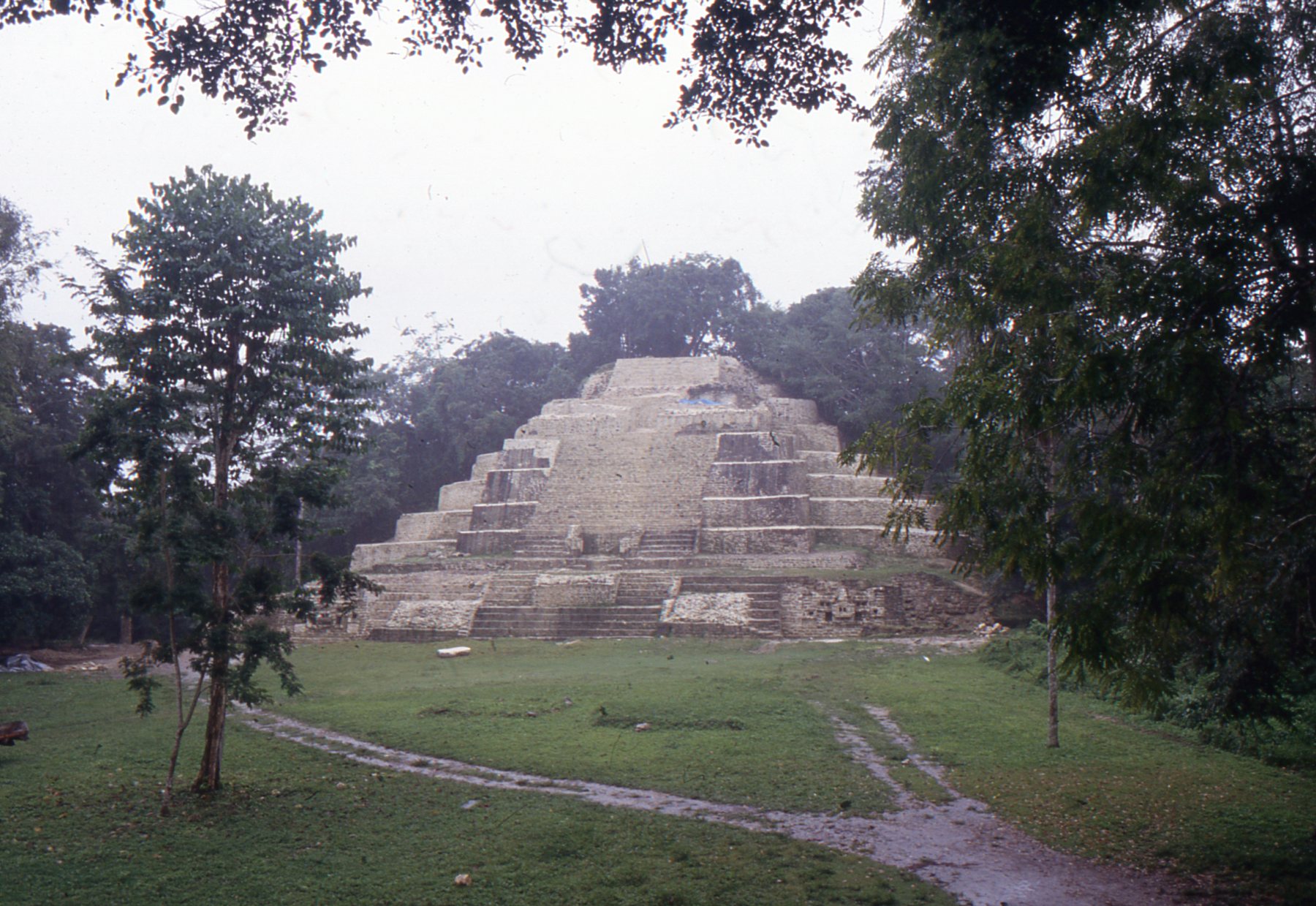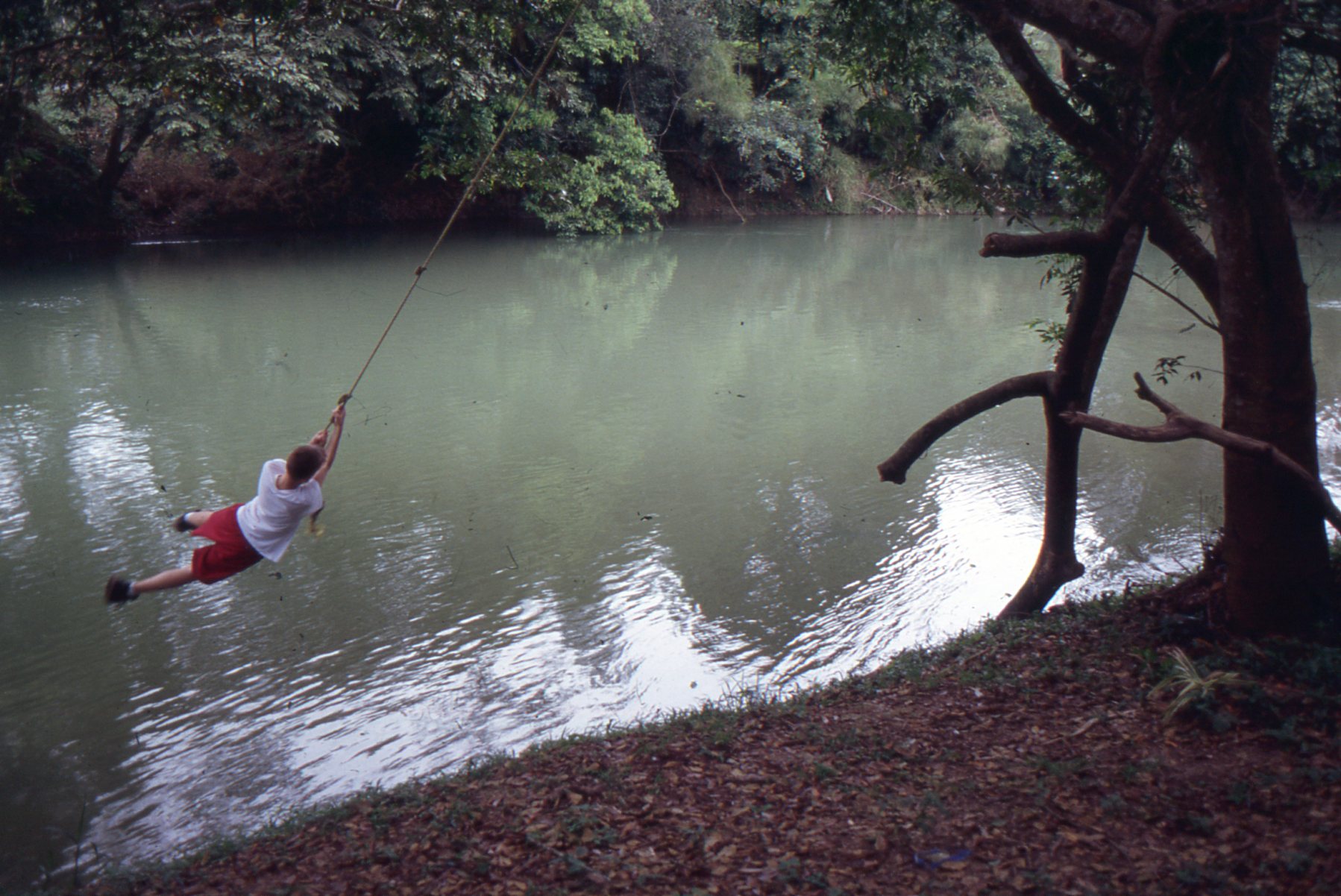11 August 2016
Further down the flat winding river we slid, the silence broken only by the low throttle of our boat’s motor. Both banks were enveloped in green jungle canopy. A lone crocodile slid off its sunning perch on a log and any temptation to drag my hand in the cooling water was suddenly gone.
Ahead of us somewhere were stone temples, and carved heads, and the crumbling remains of the only Mayan city that survived intact until the arrival of the Spaniards in the New World. They would have approached the city up this same river. What would their reception have been?
Two egrets flashed their wings above the treeline. The sun glistened off the flat river surface. And then, cutting the silence, came a full-throated banshee howl . . . and then another. “Howler monkeys,” said Mr. Novelo, our guide, but I was thinking of the dead spirits of all those Mayans who’d lived here through the centuries.
We turned in towards a small, wooden dock, and a pathway leading off into the jungle. Adventure awaited. . . .
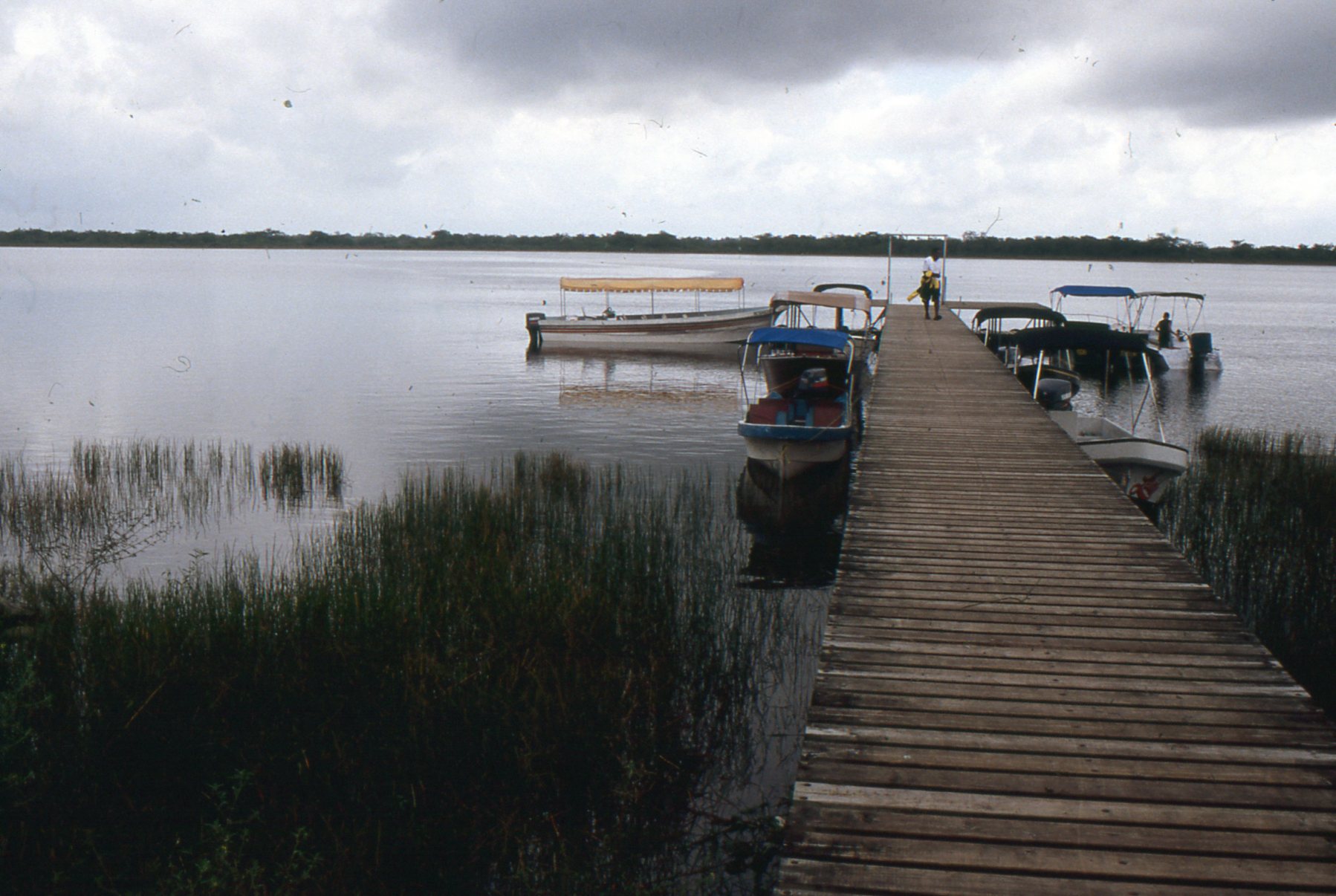
By the time you reach the boat dock at Lamanai, the river has spread out into a lagoon and the Mayan past seems to have taken over completely.
Mention Belize and people quickly think of great snorkeling and diving sites, or the biggest barrier reef in the western hemisphere. But to focus only on the Belizean coast is to miss a great deal of what this tiny, breathtakingly diverse country is all about.
First off, Belize is as much Central American as it is Caribbean. It’s home to an astonishing ethnic mix. There are villages of pure Mayans, coastal settlements of Garinagu (a combination of Carib Indian and shipwrecked African slaves), remote Mennonite settlements, and pockets of recent refugees from surrounding Central American countries. Add in the Chinese and East Indian merchants that pop up in every town, and the flavorful Creole culture (based on the intermarriage of Scottish and English pirates with escaped African slaves) which dominates this English-speaking country, and you have an ethnic stew that is second to none.
Travelers interested in Mayan ruins have multiple options in Belize: Altun Ha, just north of Belize City, has its temple facade plastered on every Belikin beer bottle in the country. Xunantunich, out near the Guatemalan border, features the awe-inspiring 130 foot-high roof comb of El Castillo. And barely-excavated Caracol, deep in the Maya Mountains, is turning out to be possibly the largest Mayan city ever in existence.
But it is a site in little-visited northern Belize that offers the most romantic manner of approach—and the location of the longest continuously inhabited Mayan city of all time. When our family visited Belize, a journey to the ruins of Lamanai was at the top of our agenda.
While it is possible to reach Lamanai by road, the convoluted route is both long and fairly boring. Easily the most adventurous route to the ruins is via the New River and its jungly, crocodile-infested banks. We began our journey in the northern city of Orange Walk. This sugarcane town and market center holds little of appeal to travelers, aside from the sleepy, tree-lined plaza and the many cowboy-hatted Mennonites tromping through town selling produce. But the town backs on to the New River, and it is here that the best tours to Lamanai begin.
We booked with Jungle River Tours. The four Novelo brothers are capable archeologists and naturalists, and delight in sharing their stretch of the country with visitors. In a sun-shaded motorboat seating about twenty people, we headed south up the river for a 90 minute ride into the jungle past.
Aside from a few fishermen in wooden canoes, the river was still. Herons and egrets dabbled in the shallows, sleeping crocodiles dozed in the mangroves and on fallen tree branches, and far in the distance we could see a huge jabiru stork guarding its treetop nest. The jabiru stork stands up to five feet tall with a nine foot wingspan, and is the largest flying creature in the western hemisphere.
Our boat also passed the remote Mennonite settlement of Shipyard. As we glided past, a farmer in a big straw hat and coveralls was out plowing his field with a mule and three freckle-faced boys sitting on the end of their wooden dock took turns diving into the river. It might have been a Norman Rockwell painting.
At the end of the river trip we emerged in a jungle clearing at Lamanai. Not only was this site founded early (1500 BC) but somehow, due to its isolation and the excellent water source of the river, this city lived on for 500 years after all the other Mayan cities collapsed. It was still in existence when the Spanish arrived in the early 1600s! We saw sets of pottery and fragments of temple friezes which were done in the post-classical style found only at this site.
There were also a series of half-uncovered temples in the jungle. In Belize, they tend to excavate only the west sides of Mayan buildings, because the east side is the direction hurricanes come from. We examined a haunting 15 foot-high stone mask of a Mayan ruler emerging from a crocodile and disturbed a troop of howler monkeys that set up an amazing din. They sound uncannily like the dinosaurs in Jurassic Park. Frightening even when you know what the sound is—imagine those Spaniards on their first night in the jungle.
It is also possible to explore some more modern remains. There are still ruins of two churches that the Spanish built when they first attempted to convert the last Mayans. There’s also a ruined sugar mill in the jungle, which was erected by a band of disaffected Confederate soldiers who came to Belize after the end of the Civil War with the idea of reconstructing the antebellum south.
In the end, two structures were most evocative: the Lag Temple is both the tallest building on the site (rising 125 feet above the canopy) and one of the oldest remaining on the entire Ruta Maya. Howler monkeys are particularly thick around it. The Temple of the Jaguar—part of a complex of residential buildings—shows the long line of Mayan habitation here in its many modifications. Around it, the jungle envelops, but does not obscure, its brooding might.
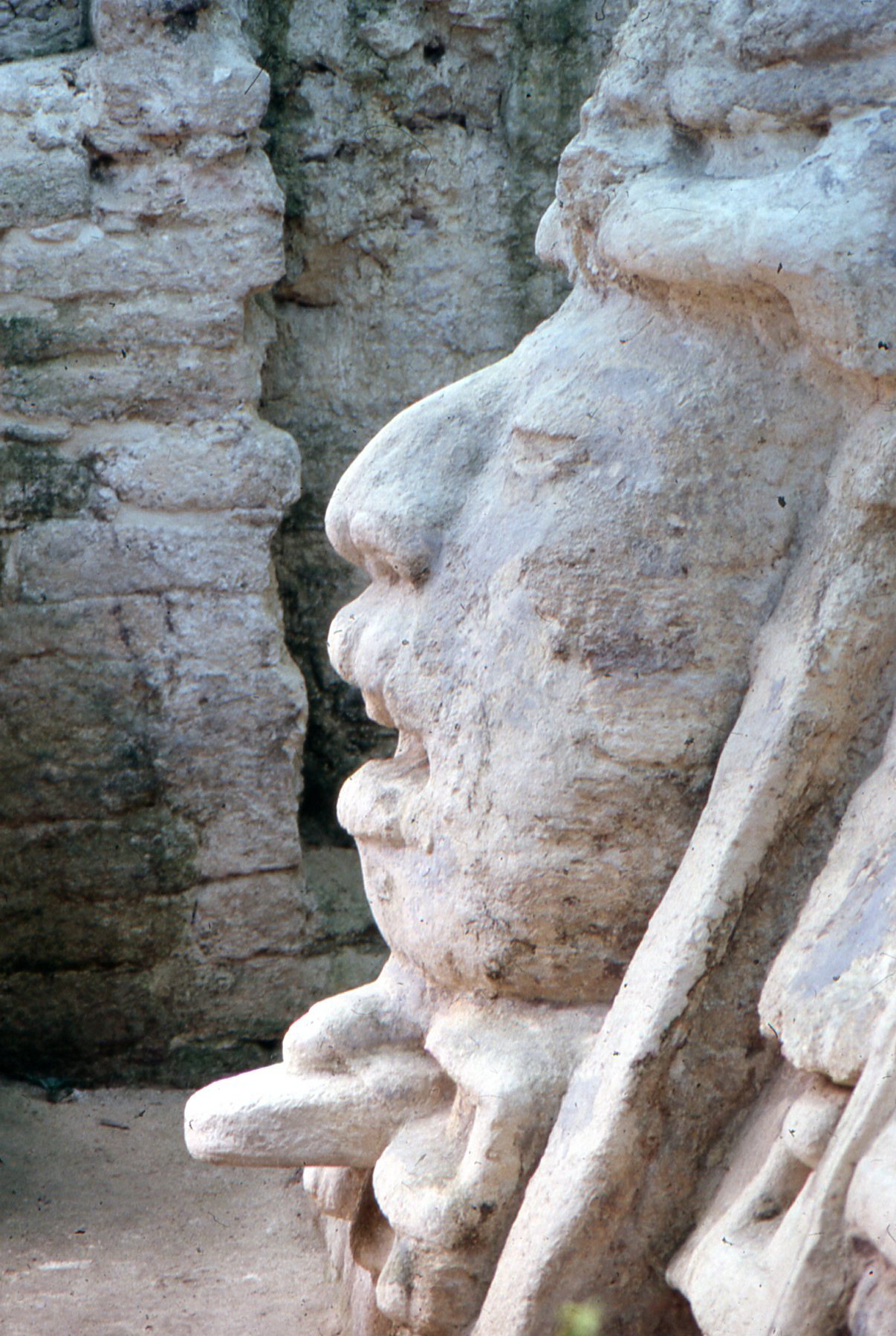
One of Lamanai’s most notable sights is this classically Mayan profile of a king emerging from a crocodile.
So many ancient sites are marred by gregarious crowds of visitors, or intrusive modern elements nearby. Lamanai stands out for its nearly silent, jungle-enshrouded atmosphere, where the past seems to seep from its every stone.
